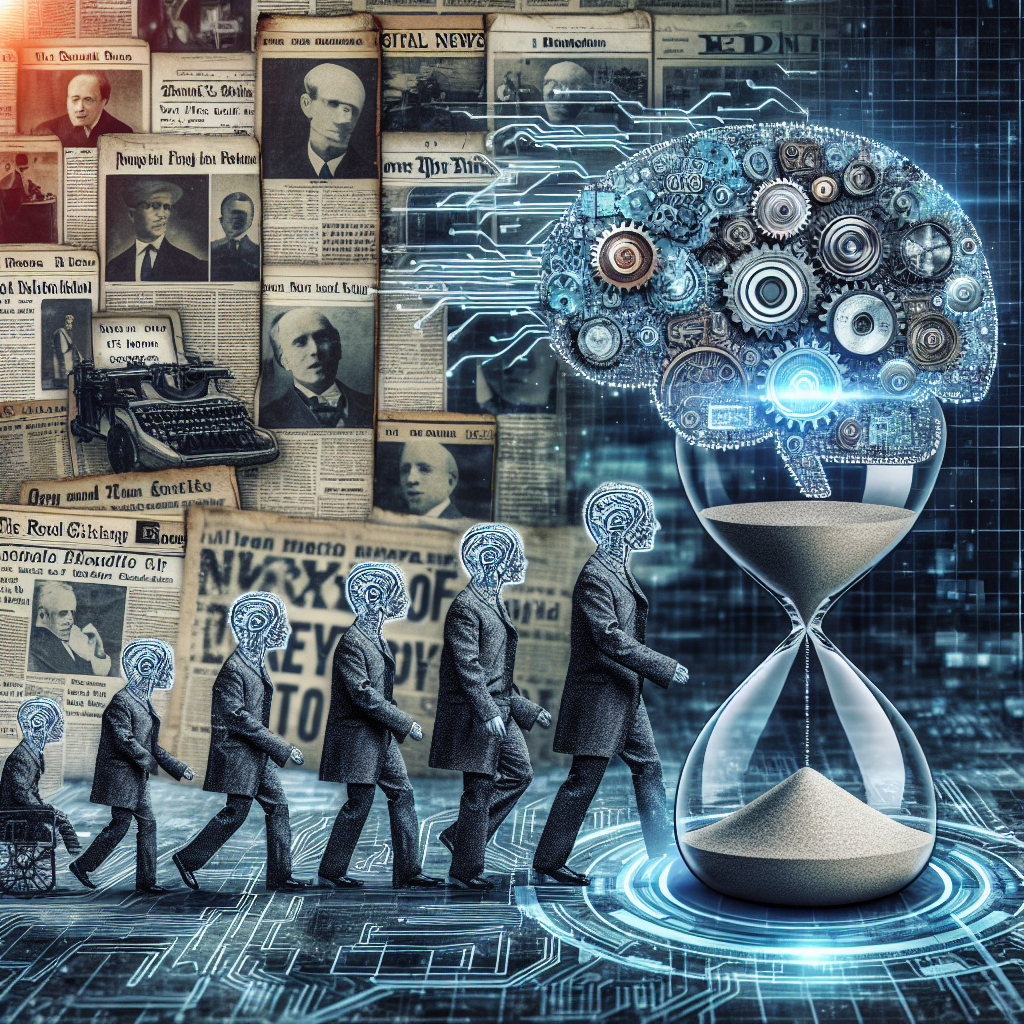The Evolution of News Aggregators: How AI is Curating News Content
In today’s fast-paced digital world, staying informed about current events can be a daunting task. With so much information available from a multitude of sources, it can be overwhelming to sift through all the noise and find the news that is most relevant and important to you. This is where news aggregators come in.
News aggregators are online platforms that collect news stories from various sources and present them in a single, easily digestible format. They have become increasingly popular in recent years as people seek efficient ways to stay informed without having to visit multiple websites or apps.
The evolution of news aggregators has been driven by advancements in artificial intelligence (AI) technology. AI algorithms can analyze vast amounts of data in real-time and curate news content based on a user’s preferences and interests. This has revolutionized the way we consume news, making it more personalized and relevant to each individual.
One of the key benefits of AI-powered news aggregators is their ability to filter out fake news and misinformation. By using machine learning algorithms to analyze the credibility of sources and fact-check news stories, these platforms can provide users with accurate and reliable information. This is especially important in today’s era of fake news and disinformation campaigns.
Another advantage of AI-driven news aggregators is their ability to deliver news content in a timely manner. By constantly monitoring news sources and updating their content in real-time, these platforms ensure that users are always up-to-date on the latest developments. This is particularly useful for breaking news stories or events that are unfolding rapidly.
Furthermore, AI-powered news aggregators can help users discover new and relevant content that they may not have found on their own. By analyzing a user’s reading habits and preferences, these platforms can recommend articles and stories that are likely to be of interest to them. This personalized approach to news curation ensures that users are exposed to a diverse range of perspectives and topics.
Despite the many benefits of AI-driven news aggregators, there are also some concerns about their impact on the media landscape. Critics argue that these platforms can create filter bubbles, where users are only exposed to news that aligns with their existing beliefs and biases. This can lead to a lack of diversity in the news sources that users are exposed to, potentially limiting their understanding of complex issues.
To address these concerns, some news aggregators have implemented features that promote diversity and balance in the content they present. For example, they may include articles from a wide range of sources and viewpoints, or provide users with tools to customize their news feed and receive content from a variety of perspectives. By offering users a more comprehensive and balanced view of the news, these platforms can help mitigate the risk of filter bubbles and ensure that users are exposed to a more diverse range of opinions and information.
In conclusion, the evolution of news aggregators has been driven by advancements in AI technology, which have revolutionized the way we consume news. By leveraging machine learning algorithms to curate personalized and relevant content, these platforms have made it easier than ever for users to stay informed about the world around them. While there are some concerns about the impact of AI-driven news aggregators on the media landscape, the benefits they offer in terms of accuracy, timeliness, and personalization make them a valuable tool for staying informed in today’s fast-paced digital world.
FAQs
Q: How do AI-powered news aggregators determine which news stories to show to users?
A: AI-powered news aggregators use machine learning algorithms to analyze a user’s reading habits, preferences, and interactions with the platform. Based on this data, the algorithms can recommend news stories that are likely to be of interest to the user, ensuring that they receive personalized and relevant content.
Q: Are AI-powered news aggregators biased in the content they present?
A: While AI-powered news aggregators can create filter bubbles by showing users news that aligns with their existing beliefs and biases, many platforms have implemented features to promote diversity and balance in the content they present. By including articles from a wide range of sources and viewpoints, these platforms strive to offer users a more comprehensive and balanced view of the news.
Q: How do AI-powered news aggregators filter out fake news and misinformation?
A: AI-powered news aggregators use machine learning algorithms to analyze the credibility of sources and fact-check news stories in real-time. By identifying and flagging fake news and misinformation, these platforms help users access accurate and reliable information.
Q: Can users customize their news feed on AI-powered news aggregators?
A: Yes, many AI-powered news aggregators provide users with tools to customize their news feed and receive content from a variety of perspectives. By allowing users to tailor their news consumption based on their interests and preferences, these platforms ensure that users are exposed to a more diverse range of opinions and information.

